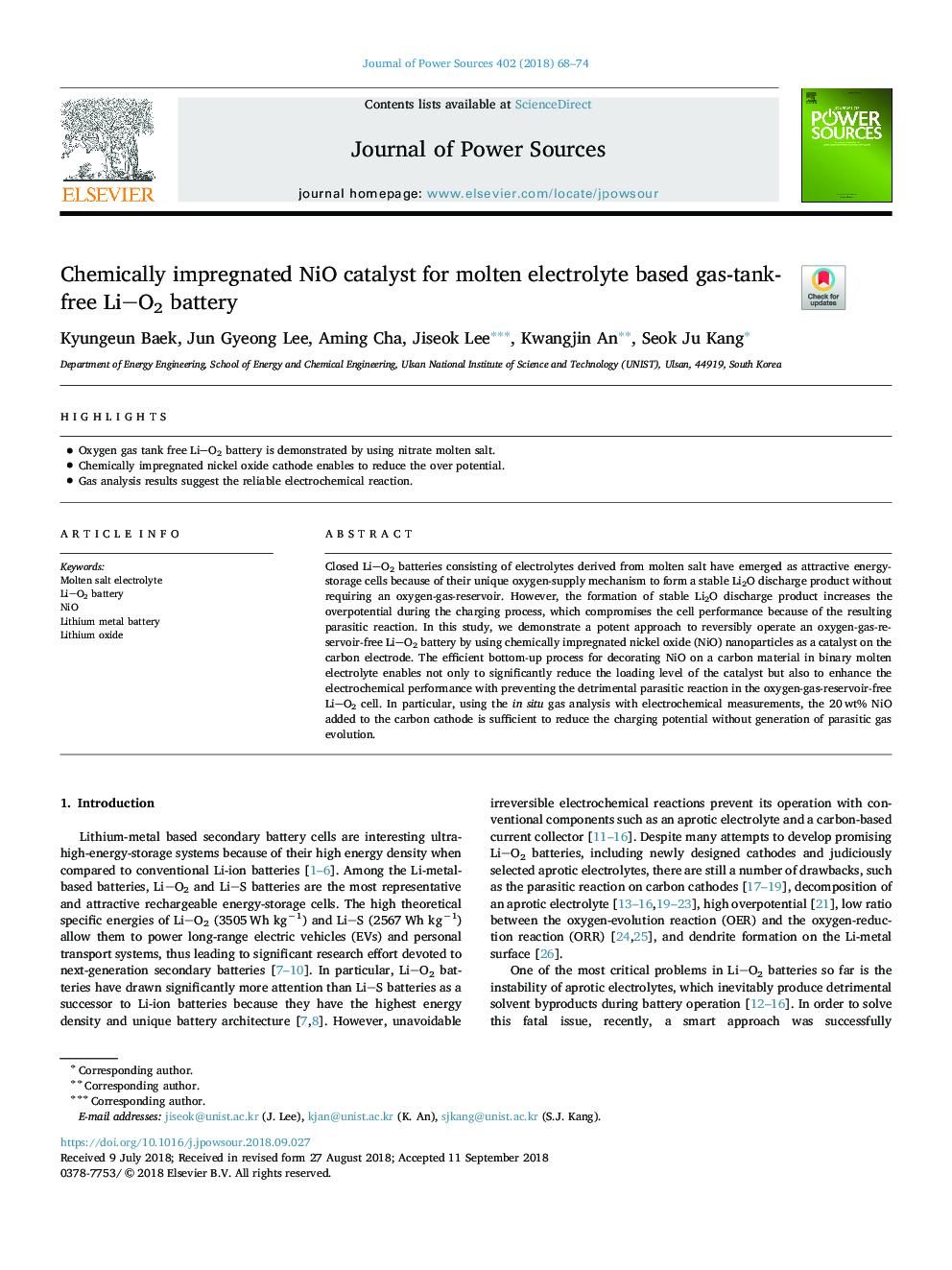| Article ID | Journal | Published Year | Pages | File Type |
|---|---|---|---|---|
| 10154680 | Journal of Power Sources | 2018 | 7 Pages |
Abstract
Closed LiO2 batteries consisting of electrolytes derived from molten salt have emerged as attractive energy-storage cells because of their unique oxygen-supply mechanism to form a stable Li2O discharge product without requiring an oxygen-gas-reservoir. However, the formation of stable Li2O discharge product increases the overpotential during the charging process, which compromises the cell performance because of the resulting parasitic reaction. In this study, we demonstrate a potent approach to reversibly operate an oxygen-gas-reservoir-free LiO2 battery by using chemically impregnated nickel oxide (NiO) nanoparticles as a catalyst on the carbon electrode. The efficient bottom-up process for decorating NiO on a carbon material in binary molten electrolyte enables not only to significantly reduce the loading level of the catalyst but also to enhance the electrochemical performance with preventing the detrimental parasitic reaction in the oxygen-gas-reservoir-free LiO2 cell. In particular, using the in situ gas analysis with electrochemical measurements, the 20â¯wt% NiO added to the carbon cathode is sufficient to reduce the charging potential without generation of parasitic gas evolution.
Related Topics
Physical Sciences and Engineering
Chemistry
Electrochemistry
Authors
Kyungeun Baek, Jun Gyeong Lee, Aming Cha, Jiseok Lee, Kwangjin An, Seok Ju Kang,
